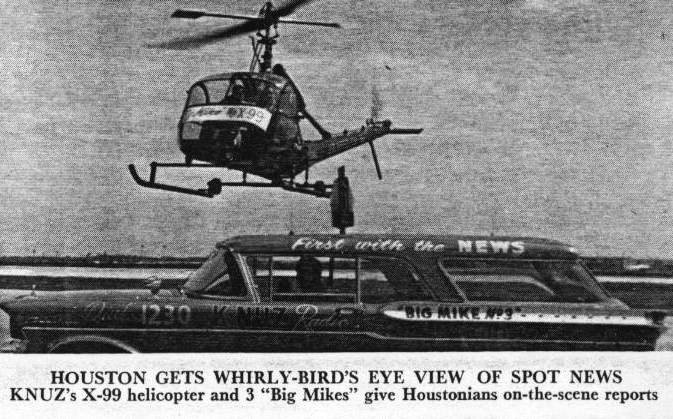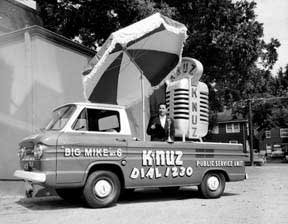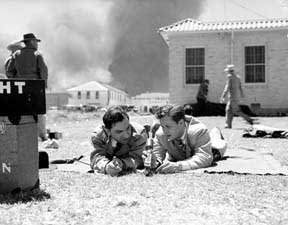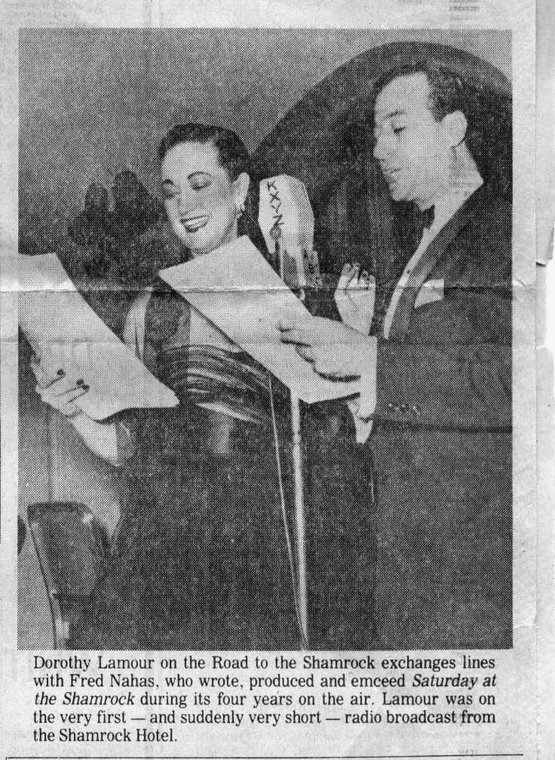On March 8, 1946, the FCC granted a Construction Permit for a new standard broadcast station in Bay City, Texas, to operate on 1110 kilocycles with 1000 watts, daytime only. The original application apparently had been filed in February, 1945. Principals of Bay City Broadcasting included John George Long, T. C Dodd, a cattleman, and J.A. Clements, apparently of Angleton, who had formerly been with KPAC, Port Arthur, and at the time was with the Addressograph-Multigraph Corporation in Houston. The estimated cost of construction for the new station was $30, 597.
Long, also known as John G. Long and Johnny Long, was the most important party. Apparently a native and resident of Bay City, he would, through his Long Broadcasting Enterprises, own or operate KVIC, Victoria, KSAM, Huntsville, KNET, Palestine and KTLW, Texas City, in addition to KIOX. Bay City Broadcasting also applied for a 50 kw station in McAllen to operate on 1560 kc. Long was also an owner and operator of as many as 70 theaters across Texas, including the Showboat theater in Texas City, where KTLW would be located.
Information about the early years of KIOX is difficult to find for a number of reasons: the station has been deleted and it’s FCC records are not accessible online, copies of the Bay City Tribune for that era apparentlly are non-existent, and online scans of the fine print notations in Broadcasting Magazine are often illegible. As a result, I do not know when the call letters were applied for and approved, what they stood for, if anything, and when the station actually got on the air, but by July 29, 1946, the station was listed along with 6 others joining the Mutual Broadcasting System as of August 1 so presumably it was on the air by that time. In the meantime, on May 20, 1946, the FCC had accepted for filing an application for modifications to the original CP to change the frequency from 1110 to 1270 kc, change the power from 1000w, daytime, to 1000w, unlimited, and install a new transmitter and antenna. These modifications were not approved by the FCC until January 27, 1947, along with extensions for the dates of commencement and completion of the changes.
Long’s purchase of KSAM, Huntsville was approved in October, 1946, and his purchase of KVIC, Victoria, from Morris Roberts, was approved in December, 1946. In February, 1947, Clements' interest in Bay City Broadcasting was transferred to Harry Reading, Jr., for $8000. Reading had been an IRS Collector and was then employed as accountant by Long. Clements was partner in other broadcast enterprises, either applied for or operating, in Del Rio, San Angelo, and Houston.
Long’s application for KTLW was approved in June, 1947, and then in early October, the move of KIOX to 1270 kc was authorized. In it’s November 17, 1947, issue, Broadcasting ran a story about the formal opening of the new station on November 10. Cost of the facility was estimated at $200,000. There was a list of important officers and staff of Long Broadcasting Enterprises including some of the air talent. As the operator of a small group of stations, Long had been able to attract staffers from far and wide including such major markets as Detroit, Windsor, Ontario, San Antonio and Houston.
A year later, in November, 1948, tendered for filing with the FCC was an assignment of the license of KIOX eliminating Dodd and Reading from the ownership. The consideration was something in the vicinity of $12-13,000 for their two 12.5% shares as best I can make it out. It was mentioned that the station was losing money. Thus did John G. Long become sole owner of KIOX.

See Part 2
here.
































